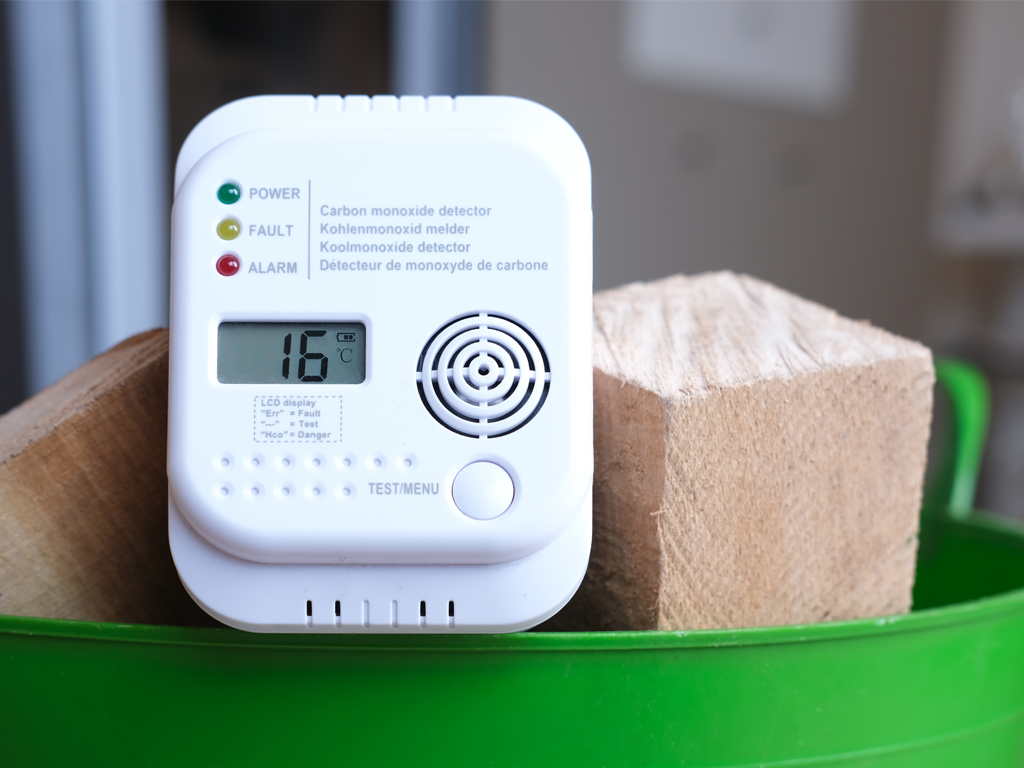We’ve previously reviewed the 6 outdoor air quality criteria monitored by the EPA, but did you know that the great indoors have 6 air quality criteria too? New real-time smart technology makes monitoring these criteria easier and more beneficial than ever. Below are 6 major metrics to focus on when testing indoor air quality (IAQ) in real time.
1. Particulate Matter (PM)
As we’ve discussed many times before, PM exposure can cause a host of mental and physical health issues. Cooking, heating, and outdoor particulate infiltration all contribute to your indoor levels. Most residential sensors and publicly available outdoor air trackers will focus on PM2.5, defined as fine inhalable particles smaller than 2.5 micrometers. These are of greater concern given that they can be absorbed into your blood and damage the brain-blood barrier.
The benefit of tracking PM in real time is that you can learn when your PM levels are highest and how long these heightened levels last; this will help you target the ideal solution. For instance, if your PM levels only spike on fried chicken night, you might need to open the window in your kitchen. However, if they are frequently spiking in the middle of a hot summer's day, your building might need to be sealed against outdoor air infiltration. HEPA filters are rated to catch 99.97% of particles down to 0.3 microns, so portable HEPA purifiers can supplement whatever precautionary measures you might take.
2. Carbon Dioxide (CO2)
Speaking of sealing your building, while it can reduce the infiltration of outdoor contaminants, sealing can also prevent indoor contaminants from leaving the building. Monitoring carbon dioxide levels is a handy way to test if this is the case. When carbon dioxide levels build up indoors, it often means that other contaminants are building up too. Even if your building isn’t sealed, real-time CO2 monitoring lets you know when to increase ventilation.
Of course, carbon dioxide is also undesirable in itself. At levels above 1,000 parts per million (ppm), poor air quality becomes quite noticeable. At levels above 5,000 ppm, it becomes dangerous.
Most government agencies recommend keeping CO2 levels below 1,000 ppm, but some experts think even this is too high. You’ll want your carbon dioxide level indoors to be as close to the outdoor levels as possible. Of course, as outdoor levels of carbon dioxide have gone from 365 ppm to 425 ppm over the last 2 decades, your ability to control this factor is growing increasingly limited.
3. Carbon Monoxide (CO)
Carbon monoxide is often caused by incompletely combusted cooking and heating fuels. When inhaled, carbon monoxide binds with the hemoglobin in your blood, preventing your brain from getting enough oxygen. This quickly causes unconsciousness followed by death. If you don’t monitor CO in real time, you won’t know there’s a problem until you’re being poked by pitchforks (or handed your harp and halo).
If you don’t have a CO detector, get one today. A CO detector warns you before you lose consciousness so that you can evacuate the building.
4. Total Volatile Organic Compounds (TVOC Gas)
There are hundreds of different types of VOC gases — each with a unique cause, health effect, and exposure limit. Because of this, most sensors give the total level of all VOC gases as a single number. Some distributors, such as ActivePure, can provide you with monitors which specify formaldehyde levels as well. Formaldehyde is specifically relevant because it’s commonly exuded by newly manufactured furnishings such as carpets and pressure-treated wood and is the most common and widely known VOC gas.
In an office setting, one advantage of monitoring TVOC gas is to detect if your HVAC is sending air via the correct route. For instance, if benzene from the painter's studio is reaching the tech startup, there might be undesirable backflow between floors.
In a household setting, one advantage of monitoring TVOC gas is to see how your purchase choices change your indoor air. For instance, if levels remain elevated long after you’re done cleaning the bathroom, you may want to switch to less volatile products.
5. Relative Humidity (RH)
Excess moisture almost always leads to increased mold growth. Thus, just as CO2 can be a good proxy for ventilation, humidity can be a good proxy for mold spores (albeit you should still visually check for mold in bathrooms, kitchens, ductwork, basements, etc.). Bacteria, too, seem to thrive best in humid environments.
Humidity also affects a host of non-living air quality factors. As one 1986 paper summarizes, “Relative humidity also affects the rate of offgassing of formaldehyde from indoor building materials, the rate of formation of acids and salts from sulfur and nitrogen dioxide, and the rate of formation of ozone.”
For these reasons, relative humidity should be monitored in real time to ensure it remains between 40% and 60%. A real-time monitor can also communicate with humidifiers, dehumidifiers, or enthalpy recovery ventilators to adjust building conditions at need.
A Note on Humidity & Perceived Air Quality (PAQ)
Perceived air quality deals with the comfort and perception of building residents rather than specific levels of building contaminants. Relative humidity, airflow, and temperature are complementary aspects of PAQ. Thus, decreasing humidity and/or temperature can temporarily compensate for the discomfort of insufficient airflow, and vice/versa.
However, it should be noted that such a measure is limited in both effectiveness and scale. For instance, one European study found that increasing airflow cannot improve comfort once RH exceeds 70%. The same study cautions that such temporary tweaks don’t address contaminants directly, i.e., “the pollution level may still cause negative health effects.”
6. Temperature
Temperature is similar to humidity in how it affects perceived air quality. In fact, one 2024 study found that dissatisfaction with indoor temperature was associated with negative mental health and increased alcohol use. Temperature also affects mold and bacterial growth.
However, the biggest benefit of monitoring temperature in real time (besides sidestepping alcoholism) is saving money. By connecting your heating and cooling systems to a smart thermostat, you can train your office or home to work at optimal efficiency (i.e., only when and how you need it). Forgot to turn down the AC when you left for the day? Your thermostat remembers. Having trouble getting to work on time? Your smart thermostat will warm up the room before your feet hit the floor. Is the conference room empty when the weather is nice? A smart thermostat keeps it on energy-saving mode until the next rainy day.
A smart thermostat can save homeowners about 8% on their utility bills. Offices tend to have more energy waste than homes, so businesses should expect to save even more.
The Future of IAQ Testing
One final thing to consider: with the growth of AI, real-time monitors are only getting better at their jobs. You don’t have to wait for some future day to reap the benefits of futuristic air quality testing. ActivePure recently started sourcing IAQ sensor suites for our clients — smart sensors that generate clear understandable data using machine learning that allow us to even further customize the optimal solution for any indoor space.
Now, you can both identify and solve your air quality problems with a single call to ActivePure. Contact us today to get started.



